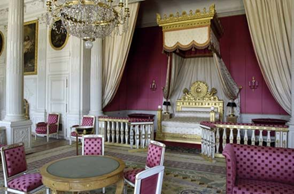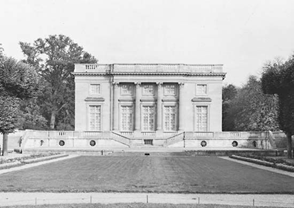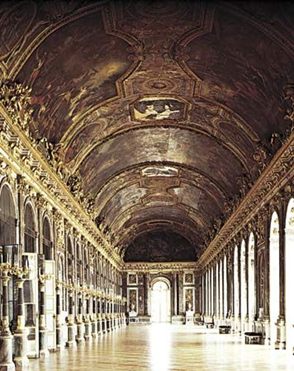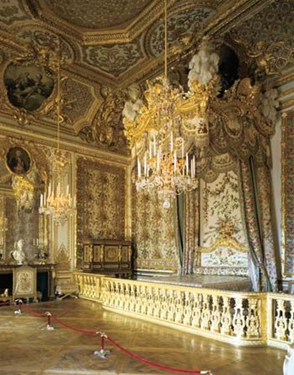3.5 Merlin has to investigate about Versailles!!
Read the story of the palace
About (21 kilometers of Paris, in the city of Versailles, stands the largest palace in France. It was built because of the consuming envy of King Louis XIV, and once completed it became the object of envy of every other monarch in Europe. Versailles served as a royal residence for more than a century—from 1682 until 1789, when the French Revolution began.
On August 17, 1661, the French superintendent of finances, Nicolas Fouquet, offered a large celebration in honor of Louis XIV. The festivities took place at Fouquet’s magnificent newly completed château, Vaux-le-Vicomte. When Louis saw this palace he was angry.
How come that one of his ministers had such a home, while he did not? He had Fouquet thrown into prison and hired the men who had designed and built the palace to do the same for him at Versailles.
Versailles was not even a town when the king’s predecessor, Louis XIII, built a hunting lodge there in 1624. This small structure became the base on which was constructed one of the most costly and extravagant buildings in the world. It was meant to be a home for Louis XIV, known as the Sun King, who boasted of himself, “I am the state.” The men in charge of the project were Louis Le Vau, architect; Charles Le Brun, painter and decorator; and André Le Nôtre, landscape architect. In the center the cross-shaped Grand Canal was laid out. There were 1,400 fountains and 400 pieces of new sculpture.
The beginnings of the palace in 1669 were fairly humble compared to the finished structure. The architect Le Vau enclosed the hunting lodge and gave it the appearance of a small palace. In 1676 another architect, Jules Hardouin-Mansart, he added a second story and built the magnificent Hall of Mirrors and the north and south wings.
Construction of the palace went on through the next century. More than 36,000 workers were involved in the project, and when the building was completed it could accommodate up to 5,000 people.


Giraudon/Art Resource, New York
Other structures on the palace grounds include the Grand Trianon, Petit (Small) Trianon, and the Carriage Museum. The Grand Trianon is a small château built by Hardouin-Mansart in 1687–88 for Louis XIV. It is now used to house distinguished visitors to France. The Petit Trianon was built by architect Jacques-Ange Gabriel at the direction of Louis XV in 1766 for Madame Du Barry, the last of his famous mistresses. Under Louis XVI it became a favorite residence of his queen, Marie Antoinette. Near the Petit Trianon is the Hamlet, a small farm village constructed for Marie Antoinette. There she and other ladies of the court would occasionally pass time pretending they were peasant women.
The north wing contains, on two floors, the Gallery of History, with portraits of the kings and members of their courts. It also contains the chapel designed by Hardouin-Mansart but completed by Robert de Cotte in 1710. Farther on in the north wing is the opera, or theater, added between 1753 and 1770 by Gabriel.

Giraudon/Art Resource, New York
The most striking room in the central part of the palace is the Hall of Mirrors. It was designed by Hardouin-Mansart, and the ceiling paintings were done by Le Brun and his assistants. The hall, on the west facade of the palace facing the gardens, is about 240 feet (73 meters) long and 40 feet (12 meters) high. Along the garden side are 17 large windows with rounded Romanesque arches. Opposite each window is a matching mirror. The glass for the hall was imported from Venice, the most important glassmaking city of Europe at the time. Apart from the glass, the walls are decorated with white and colored marble and gilded bronze.

At either end of the hall is a large square room—the Salon de la Guerre and the Salon de la Paix (room of war and room of peace). Behind the Hall of Mirrors are the apartments of Louis XIV. The rooms of his apartments are decorated with paintings of Roman gods. His throne was in the Apollo drawing room. Near his apartments are the queen’s apartments and other state residential quarters. All of these rooms are richly decorated with paintings and fine furniture.
Parts of the palace that had been damaged or rebuilt after the French Revolution were restored to their original design.
Just outside the front gates of the palace are the royal stables, which once accommodated 2,000 carriages and 2,500 horses and were later converted to military barracks. There is also a military hospital and a school of military engineering and artillery.
The town that grew around the palace was founded in 1671, during the construction of the palace . Many of the first residents were people who had come to work on the palace. When Louis XIV died in 1715, after 72 years as king, the town of Versailles had a population of 30,000. Versailles is now a residential suburb of Paris.